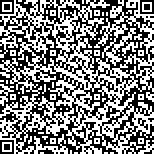| 摘要: |
| 改革开放三十年以来,尤其是近十
几年,贵州作为西部地区、少数民族地区和贫
困地区的三重叠加区反映了时代发展带来的
复杂性,而册亨板万村则是这种复杂性的集
中体现。国家力量、市场和文化在这里交织,
导致了传统聚落、民居形式和建造模式的变
迁。已有的聚落变迁模式无法完全解释贵州
少数民族聚落的变迁,本文针对贵州黔西南
少数民族聚落,提出“政策—生计模式—文
化”解释模式。政策是契机,起发动机作用;
生计模式为聚落的变迁提供资金支持,同时
也带来消费观念的转变;文化侵入则促使信
仰系统和观念的转变。这三点是贵州少数民
族地区聚落变迁的重要动力,在板万村的聚
落变迁中得到了体现和证明。希望将来在其
他贵州少数民族聚落的调查和研究中,能够
验证这个解释模型是否适用和有解释力。 |
| 关键词: 政策 贵州模式 市场经济 生计
模式 文化涵化 板万村 |
| DOI:10.13791/j.cnki.hsfwest.20180416 |
| 分类号: |
| 基金项目: |
|
| “Policy-Livlihood-Culture” Driving Force Interpretation Model for Settlement Change—A Case of Banwan Village, Guizhou Province |
|
CAO Qing
|
| Abstract: |
| After thirty years of reform and open policy, especially in recent ten years,
Guizhou, as a triple overlapping area that are western area, ethnic minority area and
depressed area, reflected the complexity of the development of times, and Banwan Village
is concentrated expression of this complexity. The intertwining of state power, markets and
culture has led to change in traditional settlements, dwellings and construction patterns.
The existing settlement change models cannot completely explain the change of ethnic
settlement in Guizhou. This article proposes a “Policy-Livelihood-Culture” interpretation
model for the settlement of ethnic monorities in southwestern Guizhou. Policy is
opportunity and act as an engine; livlihood pattern provides financial support and brings
about changes in consumption attitude; cultural intrusion leads to the transformation of
belief systems and concepts. These three points are important motive forces for the changes
of settlement in ethnic minority areas in Guizhou and are reflected and proved in Banwan
Village. It’s expected that the ethnic minority settlement investigations and researches in
the future can test whether this interpretation model is applicable and can offer convincing
explanation. |
| Key words: Policy Guizhou Model Market Economy Livelihood Model Cultural
Acculturation Banwan Village |


